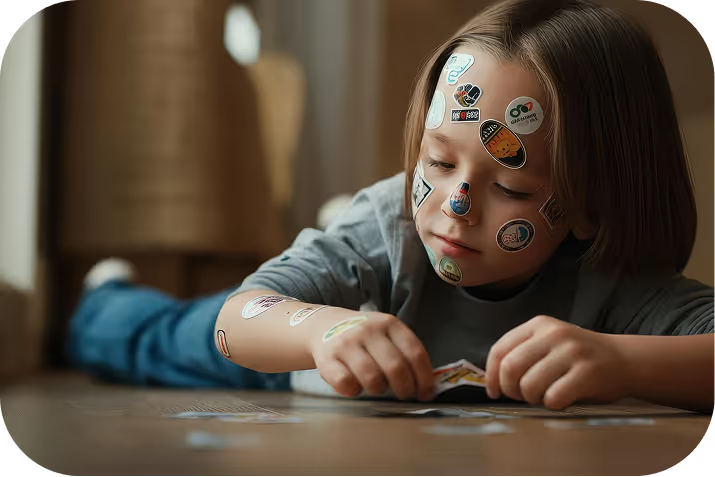Introduction
What if autism therapy could feel more personal, more inclusive, and more connected to everyday life?
In 2025, Applied Behavior Analysis (ABA) is stepping into a new era shaped by innovation, collaboration, and respect for neurodiversity. From smart technologies to family-centered practices, and from personalized plans to approaches that celebrate strengths, the field is evolving fast. And the best part? These shifts aren't just concepts on paper. They're already making a real difference, helping children and families experience therapy that is not only more effective, but also more compassionate.
Key takeaways
- ABA therapy is increasingly personalized and tech-enabled.
- AI, VR, and wearables are revolutionizing intervention design and progress tracking.
- Family-centered and neurodiversity-affirming practices are redefining best practices.
How technology is driving ABA therapy trends in 2025
ABA therapy is in the midst of a technological revolution, and the possibilities are changing the way therapy looks and feels. Today, AI-powered platforms are able to analyze data with incredible precision, helping therapists design individualized plans and even predict developmental progress. At the same time, wearable devices are making it possible to gather real-time information about movement, emotions, and behavior, giving professionals a richer understanding of each child's needs.
Technology is also opening new doors for social practice. Virtual reality environments allow children to explore safe, controlled spaces where they can rehearse social skills and interactions as if they were in real life. And for families, mobile ABA apps are becoming powerful allies. They not only streamline documentation but also make it easier for parents and caregivers to stay engaged in the process, fostering stronger collaboration between families and therapists.
In short, innovation is making ABA therapy smarter, more connected, and more empowering for everyone involved.
Pro insight: Leverage apps and wearables that provide real-time behavioral insights to make therapy adjustments on the spot.
The rise of personalized, family-centered ABA models
The trend in 2025 is clear: cookie-cutter therapy is out; personalized therapy is in. Family-centered models put parents and caregivers at the heart of the process:
- Parents receive coaching and training to reinforce skills beyond therapy sessions
- Cultural, environmental, and family values are integrated into care plans.
- Long-term independence is prioritized, with skill generalization beyond structured sessions.
- Therapy goals increasingly reflect strengths-based development, not just correction of challenges.
At Giving Growth Therapy Services, families are true partners in the process. Our team empowers caregivers with training, communication tools, and strategies that integrate ABA therapy seamlessly into everyday life.
The evolution toward neurodiversity-affirming ABA
In 2025, neurodiversity is no longer treated as an optional idea but as a core principle of progressive ABA practices.
This change reflects a growing understanding that autistic identity is something to be celebrated rather than suppressed. Instead of trying to make individuals fit a narrow mold, modern neurodiversity-affirming ABA focuses on respecting and supporting sensory processing differences, encouraging self-expression and self-advocacy, and prioritizing emotional regulation alongside mental well-being. Just as importantly, it builds on each person's unique strengths, fostering confidence and resilience that carry far beyond therapy sessions.
Pro insight: Families looking for therapy in 2025 should seek providers like Giving Growth Therapy Services, who integrate advanced technology and strengths-based approaches while keeping compassion and collaboration at the core.
Ready to experience the future of ABA therapy?
Connect with the Giving Growth Therapy Services team today to explore personalized strategies tailored to your child's unique journey.
Frequently Asked Questions
Today's ABA leverages AI, digital tools, and personalized models—all while adopting neurodiversity-affirming strategies that respect individual differences and dignity.
Parents are more involved than ever—using digital platforms, wearable data, and direct coaching from providers like Giving Growth Therapy Services to reinforce skills across home and community life.
Effectiveness varies, but modern personalized interventions allow therapy to be tailored to a wide range of developmental needs and strengths.
Sources
Latest insights
Discover valuable resources for your ABA therapy journey.
Latest insights
Discover valuable resources for your ABA therapy journey.
Join our community
Follow our blog for the latest insights and tips on ABA therapy, autism, and parenting.





